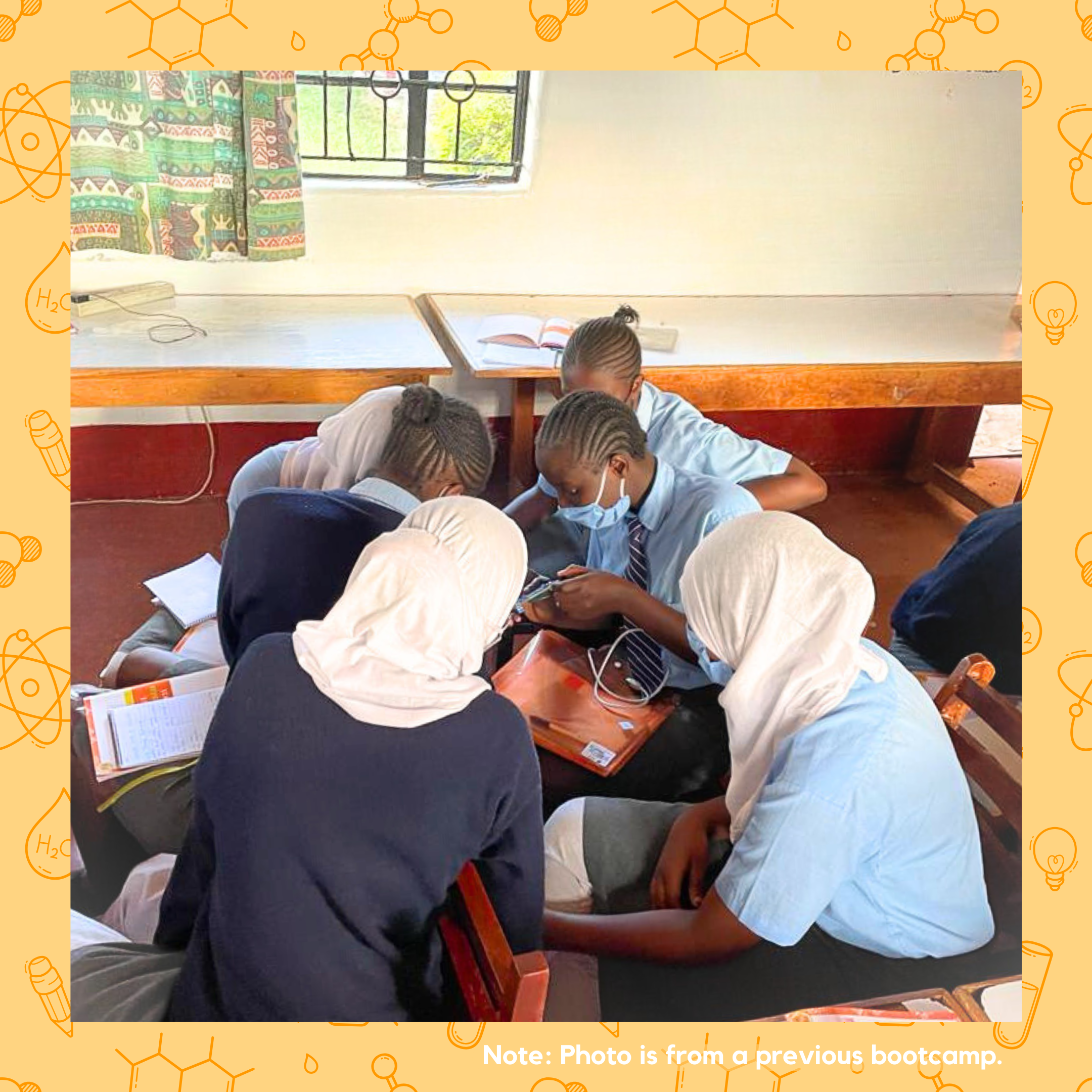
This past August, we conducted a design thinking bootcamp at a new school: Kamae Girls Borstal Institution. Kamae Girls Borstal Institution is an all-girls school and correctional facility, located about 20 kilometers outside of Nairobi. The entire school consists of only 22 students between the ages of 13 to 18 years old, and it is the only young girls correctional institution in Kenya. The school places a unique interest on practice skills and rehabilitation, offering vocational training, counseling, and spiritual guidance in addition to traditional education.
This bootcamp’s design exemplified our mission to deliver tailored, long-term support to each of our partnering schools. To prepare for the bootcamp, Jefferson Kangacha and Ann Mungai, members of our Projects Team, met with the administrative staff and teachers to learn more about the school and their students. Because Kamae Girls Borstal Institution does not have a computer lab, our Projects Team centered the bootcamp exercises around group discussions and activities with physical materials. A small school provided an opportunity to teach in a more close-knit environment while the five-year age range provided a challenge to cater to each student’s needs. Working in groups allowed students of varying ages to learn from each other. Additionally, our Projects Team designed the bootcamp to include teachers from Kamae Girls Borstal Institution and a neighboring correctional school that will host us for a later bootcamp. By working with teachers, we hoped to impart STEM and design thinking skills that can be passed down to future generations of students. Including staff from the neighboring school also laid the foundation for a smooth transition into the next bootcamp.
Given the wide range of student ages, the bootcamp began with a survey to establish their baseline skills. The bootcamp facilitators also explained the bootcamp’s content and purpose. We teach design thinking in underserved schools, so students can strengthen their problem solving skills and learn how to address real issues. The students shared their areas of interest, which included agriculture, technology, business, and engineering. The bootcamp facilitators used the student’s preferred topics as examples throughout the design thinking process.
Following the bootcamp’s introduction, the students and teachers began learning about design thinking principles. They completed exercises in groups, like the marshmallow challenge, using supplies we provided. The marshmallow challenge required groups to build the tallest structure that can balance a marshmallow, requiring the teams to practice teamwork, problem solving, and prototyping. Then, the students selected societal problems to focus on. The groups used design thinking techniques to tackle food insecurity, littering, cost of living, illiteracy, and public safety. Applying techniques, like Five Whys, journey mapping, and mind mapping, the student discusses the root causes of their topics and potential solutions. Centering student interests and using group discussions proved to be an effective and engaging approach.
Kamae Girls Borstal Institution was our second partnership within the Kenya Prison Service, with interest from a third institution. Around the world, incarcerated people face additional barriers to education and employment. By partnering with correctional institutions, we hope to strengthen the employment opportunities for students in the prison system.
Thank you to our four facilitators, Victor Kamugu, Jefferson Kangacha, Leah Karienye, and Ann Mungai, for designing and leading the bootcamp. Thank you to our two volunteer facilitators, Janice Wairimu and Tyler Maingi, for their time and bootcamp support. Finally, thank you to the 22 students and the staff at Kamae Girls Borstal Institution for their partnership and enthusiasm for design thinking.
